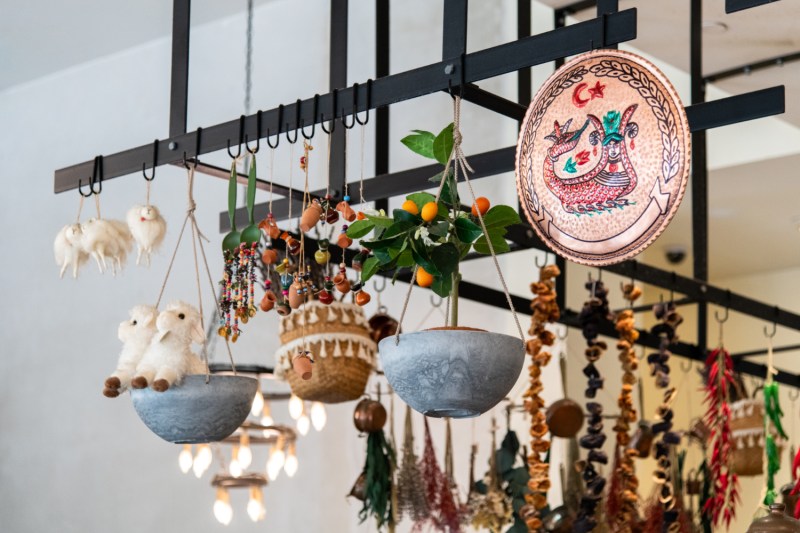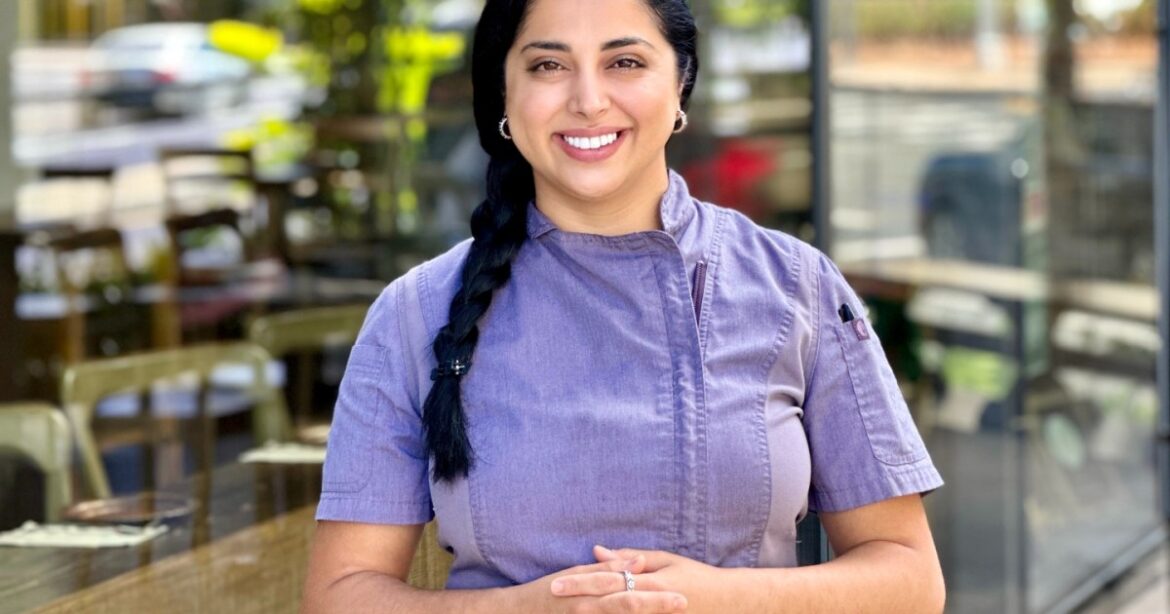There are some stories that feel uniquely American. This is one of them. It begins in Turkey and changes scenes, switching to Hawaii’s capital city. But this story is still very much being written.
At first, Ahu Hettema was on the other side of the world. Born in Mersin, Turkey, she ultimately headed stateside to study animation and visual effects. Then came the shifting immigration policy and the loss of her work permit. Feeling alone, she turned to cooking and her mother. They began to sell Turkish dishes at farmers’ markets in O’ahu in 2015 and gained a following.
Fast forward to 2020. Pandemic. Confusion. More isolation. But also the debut of Hettema’s restaurant. It would prove to be one of the hardest stretches for the culinary world in all time, but Hettema was ready. She knew all about perseverance.
Istanbul Hawaii is one of the most talked-about restaurants in Honolulu. In fact, it’s one of just a relatively few authentic Turkish eateries in the U.S. The place has found deliciousness, joy, and success in culinary inspiration from both the Old World and the Hawaiian archipelago. And it’s just getting started.
This isn’t just culinary fusion

Istanbul Hawaii
“What inspires me in Hawai‘i is the purity of ingredients and the respect farmers and fishermen have for nature,” she says. “Yes, the isolation brings challenges and a heavy reliance on imports, which we try to avoid, but it also pushes us to create our cuisine truly rooted in Hawai‘i.”
It’s easy to slap the fusion label on ISTANBUL, as it does combine elements of two distinct cuisines. But it’s not accurate. For the chef, it’s more about paying tribute to two complementary cultures.
“I don’t see it as fusion,” she says. “It’s honoring two homelands, and the farmers who sustain them. Turkish cooking is built on olive oil, citrus, grains, herbs, fresh fish, beautiful produce, and fire. Hawaiian ingredients meet those traditions with natural harmony.”
Hettema refers to cuisine as memory, or a form of living and palpable history. “Turkish, Anatolian, Ottoman cuisine has always been shaped by migration and exchange. In Hawai‘i, guests embrace it because it feels both new and deeply familiar,” she says.
Ongoing education

Istanbul Hawaii
“My mother’s kitchen was my first sanctuary,” she says. “The care in her hands, kneading, simmering, the aromas of spices taught me that food is feeling transformed into memory.”
They can be some of the tightest bonds in the human world, not just the connection of mother and daughter, but people and food, and the act of cooking. It’s an instinctive kind of task inherited from generation to generation, the preservation of tradition. And it can provide real purpose.
“Hardship taught me clarity, not to carry clutter in my mind,” she continues. “Cooking with my mother and for community reminded me why I do this: to nourish, to connect, to share, to create good emotions even in difficulty.”
Now, the restaurant is buzzing. Hettema has been delivered all kinds of critical acclaim and even became a James Beard fellow. And it feels like there’s still so much good to come.
But the challenges, of course, will continue to come as well. Many immigrants encounter obstacles in today’s political climate. And that’s to say nothing about the inherent challenges of running a restaurant business in a male-dominated industry.
What advice would she give to other aspiring American immigrants? “Carry your story as strength, not as weight,” she says. “It is difficult to leave everything familiar, but take it as an adventure. Build community, stay patient, and let obstacles transform you rather than traumatize you. Pain has a purpose: it chips away clutter so you can see your true reflection.”
The compelling cuisine

Istanbul Hawaii
There are so many flavors at play on the menu at Istanbul. Starters include bread and dips like the autumn labneh, made with Hawaiian honey and Italian truffles. The dolmas are prepared with cabbage from Moloka’i, zante currants, and pine nuts. There’s even Hawaiian reef calamari, fit with sourdough crust and persimmon-lemon aioli.
The chef is attached to the food, especially certain dishes. “Our dry-aged lamb pirzola with autumn fig and Waialua cacao jus,” the chef says of the menu item she’s most excited about at the moment. “The figs from my mother’s garden feel like memories and seasons intertwined. Ottoman roots alive with Hawaiian terroir, and a touch of her care.”
The local ingredients and seasonality persist in the drinks menu as well. There’s so much deliberation and thought that goes into each option. Take the Humming Pines, a delightful cocktail made with Four Roses Bourbon, pumpkin-spiced brown rice, and pine cone, all smoked with native Kiawe wood. Or, the Afternoon at Pera Palace, made with Kohana rum, cardamom, damask rose, guava from Wailua, and apple banana.
While so many bars are lined with citrus wedges and toothpicks, Hettema’s has Ajwa dates and Urfa chilis. Dessert items include gelato, made with Antep pistachios, Waialua chocolate, EVOO, Kona salt, Laie vanilla, and cardamom Turkish coffee. It’s just a pair of examples that showcase Hettema’s gorgeous sourcing of ingredients.
Istanbul Hawaii puts the art in culinary arts. Great food tells a story of place, and that’s precisely what these dishes do. On the plate, you’ll find invention, tradition, intrigue, and utter pleasure.
“Season by season, story by story, we’re building not just a restaurant but a platform for modern Turkish–Mediterranean cuisine and more art (my paintings),” the chef says. For Hettema, it’s all about sharing culture and nourishing community.


Dining and Cooking